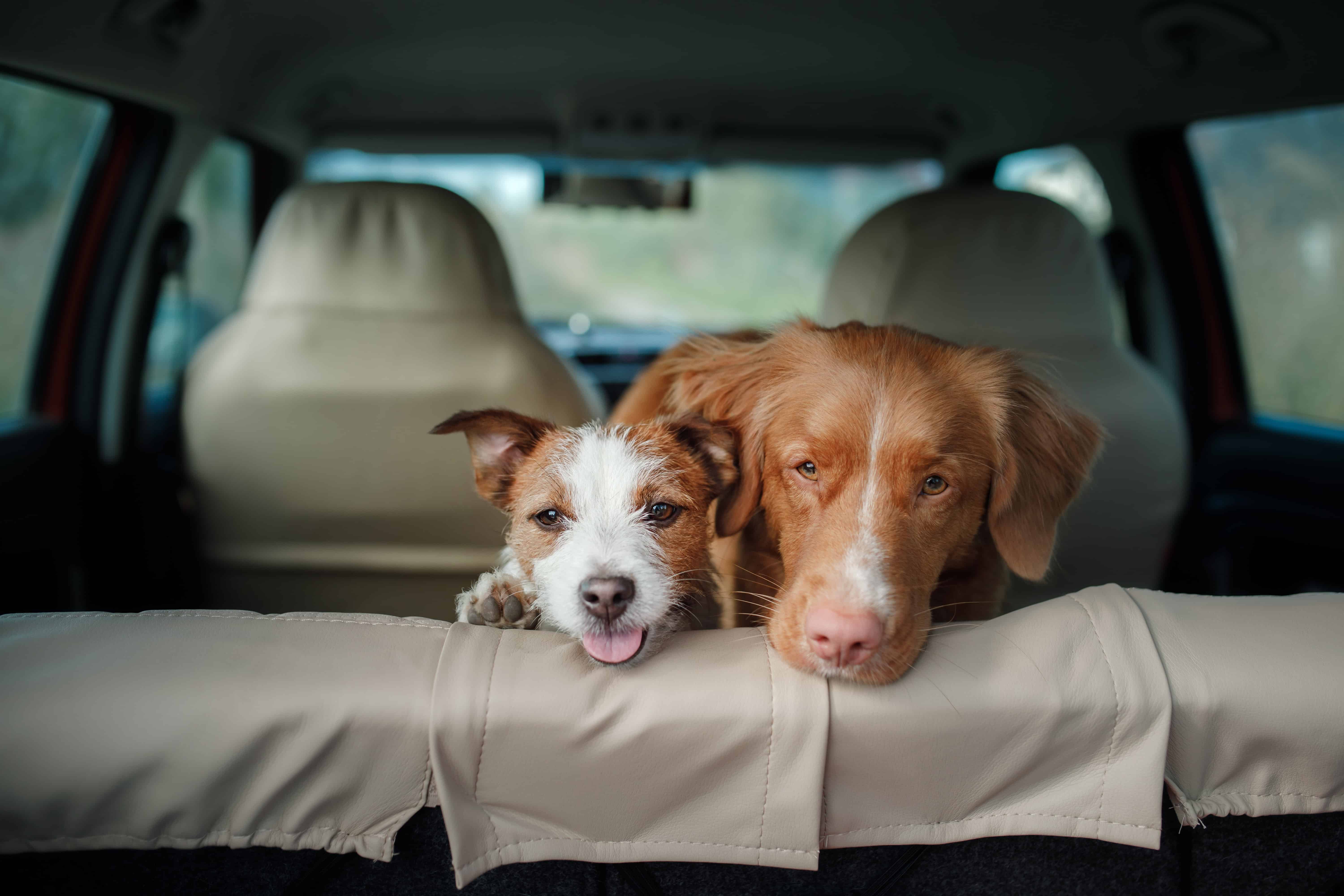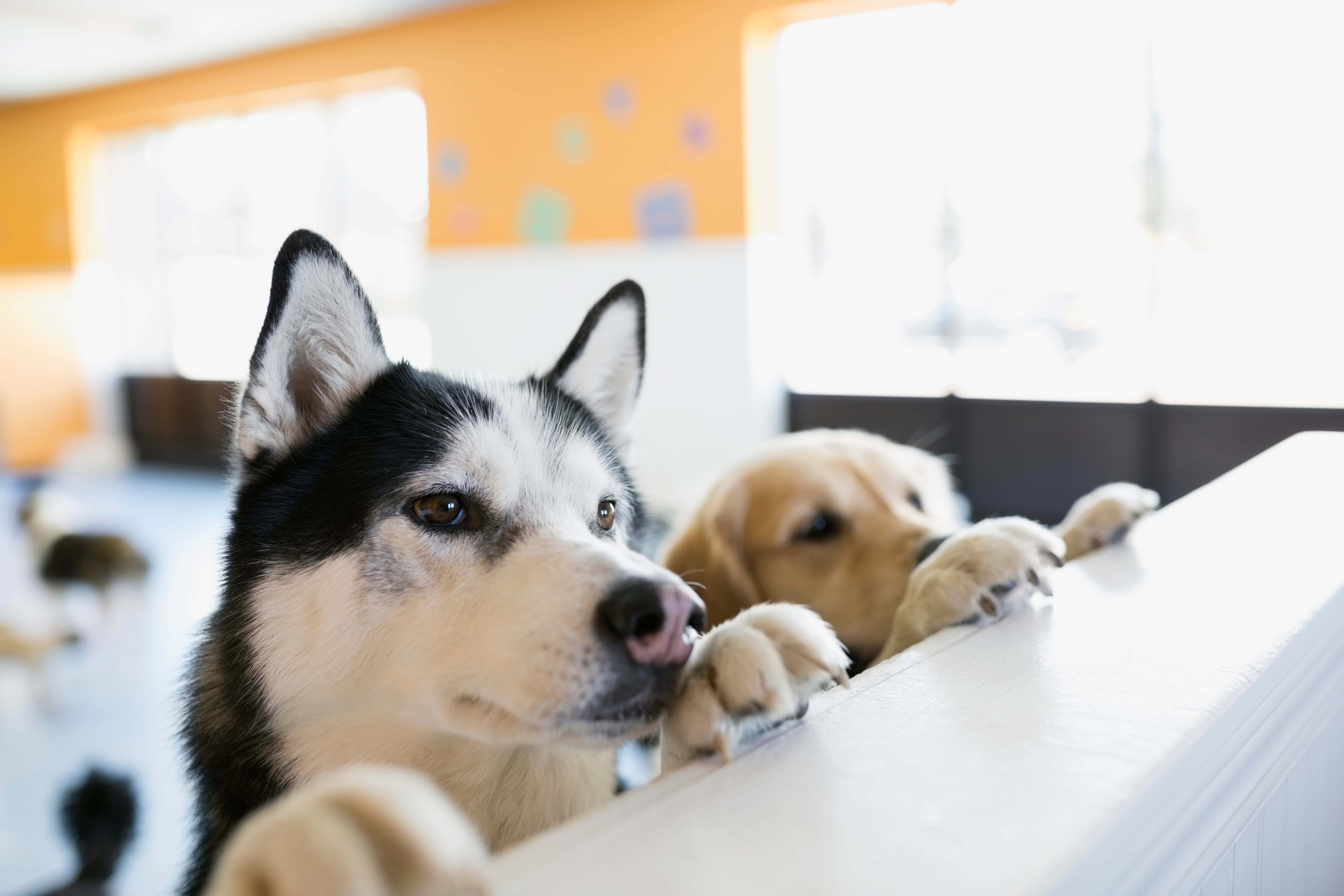Winter is now in the rearview mirror, and the warmer climes of spring and summer are almost upon us. Your family may be about to embark on a well-earned vacation – and if it’s a vacation for the whole family, then that could mean potentially bringing your dog along with you for the trip.
In fact, dogs are a huge consideration for many of us when it comes to vacations. A 2022 survey by Harvest Hosts stated that 52% of respondents based their travel plans on accommodating their pets. In a separate survey, 58% of those surveyed by Hilton even admitted they’d rather travel with their pet than a friend or family member.
Traveling with dogs isn’t just as simple as tossing them in the back of your vehicle and taking them for the odd potty break. If you plan to take longer trips with your pup, there are several factors to consider before you start your journey to help ensure your dog is safe and comfortable. In this article, we’ll run through a checklist of ten things to make sure your travels with your dog are safe.
1) Ensure your dog is secure inside your car
When you imagine your dog traveling with you on a vacation, you might picture them riding loose in your car, perhaps sitting on a child’s lap, or even alongside you in the front passenger seat. This vision of how your dog might travel with you may sound idyllic, but it is actually putting your dog – and potentially the humans in your car – at huge risk. If you are unfortunate enough to be involved in an accident and the car flips, your dog could be thrown around the car if they are not restrained, or even ejected from the car – causing catastrophic injury or death. The velocity from an airbag could also cause severe injury.
With these risks in mind, it is vital to choose a method to keep your dog secure in your vehicle to reduce the risk of injury. There are several options available. The safest choice we recommend is a durable, secured dog crate that fits snugly inside your car. In the event of a sudden impact, your dog will remain inside the crate, and there is no danger of the crate moving around and causing injury. While you will often see a variety of other restraints, harnesses and hammocks available, none of these options are guaranteed to secure your dog in a worst-case scenario. Crates like Ruffland – which I love – are safe, easy to carry, and clean. In addition, they are crash tested. Other companies like Gunner Kennels offer crash tested crates, too.
2) Practice some shorter trips first
Some dogs suffer from car sickness, and others simply just don’t enjoy traveling at all. You’ll ideally want to establish how comfortable your dog is with traveling in your vehicle on some shorter trips before setting off on a day-long drive. This can help your dog to become familiar with the sensation of traveling in the car, and give you peace of mind that they will be comfortable during the trip.
3) Pack their leash, collar and identification tags
There are some essentials that humans must pack for themselves when heading out on vacation – and it’s the same for your dog. You should never leave on a trip without a leash, secure-fitting collar, and up-to-date identification tags. Keep their leash and collar in an easily accessible spot in your car, so that you can grab them without difficulty when you reach a rest stop. It’s always smart to have a back up leash as well. If you have changed addresses or changed phone numbers, make sure that you update the identification tags prior to your trip. It is also best practice to make sure their microchip information is up-to-date.
4) Make an ‘essentials’ kit for your dog
You want to make this trip as pleasant as possible for your dog – and as safe as possible, too. Consider packing them a small bag of their own that contains their food, water, medicines and essential first aid supplies. It’s also smart to carry a cleanup kit in case your dog gets sick or has an accident on the road, so you can clean it up right away without having to endure until you make it to the next stop which could be far away. A pro tip is if you don’t have cleaning supplies, drive to your closest do it yourself car wash and use their pressure washers to clean the crate. Make sure to pack a water bowl (collapsible bowls are available that can save on space). A warm blanket can also be useful in case your vehicle breaks down in the middle of the night, and a rescue vehicle may take a while to reach you.
5) Provide regular potty breaks
It’s a part of traveling – you have to stop every so often for the occupants of the vehicle to stretch, relax, and use the bathroom. Your dog is included in this! You will know how frequently you need to stop based on your dog’s typical habits, but younger puppies and older dogs may need more potty breaks.
6) Never leave your dog unattended in your vehicle
We’ve all heard the horror stories of dogs being locked inside vehicles during the sweltering summer heat, and the terrible consequences that this can lead to. Never leave your dog on their own in the car. Aside from the risk of overheating, it is also a magnet for potential thieves. If you’re traveling solo, take your dog out on a leash for walks and potty breaks, and use drive-thru options or pet-friendly rest stops to get food and water for your journey.
7) Maintain a comfortable temperature in your car
Everyone has a different threshold for what they define as “comfortable”, but remember that your dog cannot advocate for themselves like other passengers can. Particularly if the dog is inside a crate for the duration of your journey, you’ll want to make sure the temperature is on the cooler side. Remember, they are wearing a fur coat. Make sure your air vents are directed to circulate air around the vehicle as much as possible. You can even get a battery powered fan at a home improvement store set directly in front of the crate; Ryobi makes a really good one at a reasonable price that I like.
8) Don’t let your dog put their head out the window while the car is moving
Another idealistic trope of traveling with your dog is allowing them to put their head out the window as you drive, their ears pegged back by the wind. As we mentioned above, your dog should be securely inside a crate, but even if you think the risk posed by vehicles in the opposite direction is minimal, that isn’t the main danger. The primary issue can actually arise from sand, dirt and dust that may be kicked up by other cars traveling on the road. These particles could irritate and damage your dog’s eyes, especially at higher speeds.
9) Exercise your dog
Many rest stops now have a dog park attached to them, enabling dogs to obtain some freedom during long journeys. We have previously discussed the potential drawbacks of dog parks, and these downsides don’t fade away simply because you’re on the road. However, if they are empty, allowing your dog to roam for even just a few minutes is very beneficial.
Make sure your dog is up-to-date on all vaccinations and preventatives to prevent against any diseases at places with lots of dog traffic. Even better, in a pinch, you can use an empty baseball field that is fenced in to let your dog get some zoomies out if they are off-leash trained. If you are passing through some picturesque scenery and have the time, consider taking a short break for a walk with your dog. The exercise will allow them to stretch their muscles, and can also reduce the chances of destructive behavior arising from boredom.
10) Give them something to do in their crate
Let’s be honest – road trips can feel endless, and those of you with young children will know how hard it can be to occupy them for the whole trip. However, at least kids can listen to music, play games, or engage in conversation. For dogs, it’s a different story. Keep them entertained by providing them with chew toys, food puzzles, or a Kong filled with a frozen treat. You can also make sure they engage in these games when they have some time at rest stops. Even better, have them practice an obedience routine or heeling pattern. Maybe get them to execute a place command on a park bench or a beautiful rock where you can get a nice picture!
In conclusion
As our attachment to dogs continues to grow, it seems likely that more and more dogs will be traveling alongside their human companions on roadtrips. This is something we should celebrate – your dog deserves a vacation too! By following the tips in this article, you can make sure that your dog is safe and comfortable for the duration of your journey.




